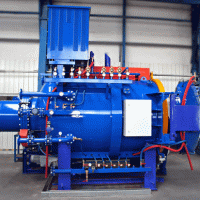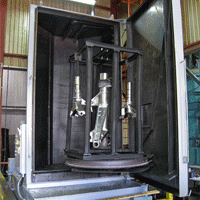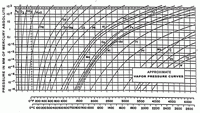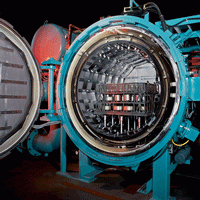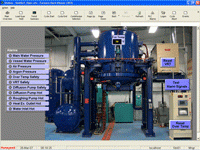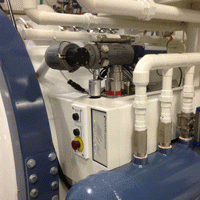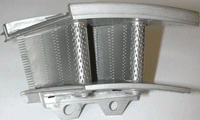For heat treating purposes, “quenching” can be defined as the rapid cooling of a metal to impart some desired property such as hardness. Different metals and alloys require different quenching rates to achieve their optimum properties. Regardless of equipment design, gas quenching in vacuum furnaces involve the same basic principles.
The gas quenching process normally consists of the following sequence of events. First, the power to the heating elements is shut off. Next, the furnace chamber and quench loop are backfilled with a non-reactive gas, commonly nitrogen or argon. The quench blower then activates, forcing the gas through quench nozzles located circumferentially in a manifold that is part of the hot zone and into the hot load. As the gas passes over the load, it picks up heat. The hot gas then exits the main chamber and travels through the quench piping to a water-cooled heat exchanger, where it is cooled. After exiting the heat exchanger, the cooled gas is drawn back through the blower to be recirculated through the chamber in a continuous cooling loop. BY JEFF PRITCHARD

